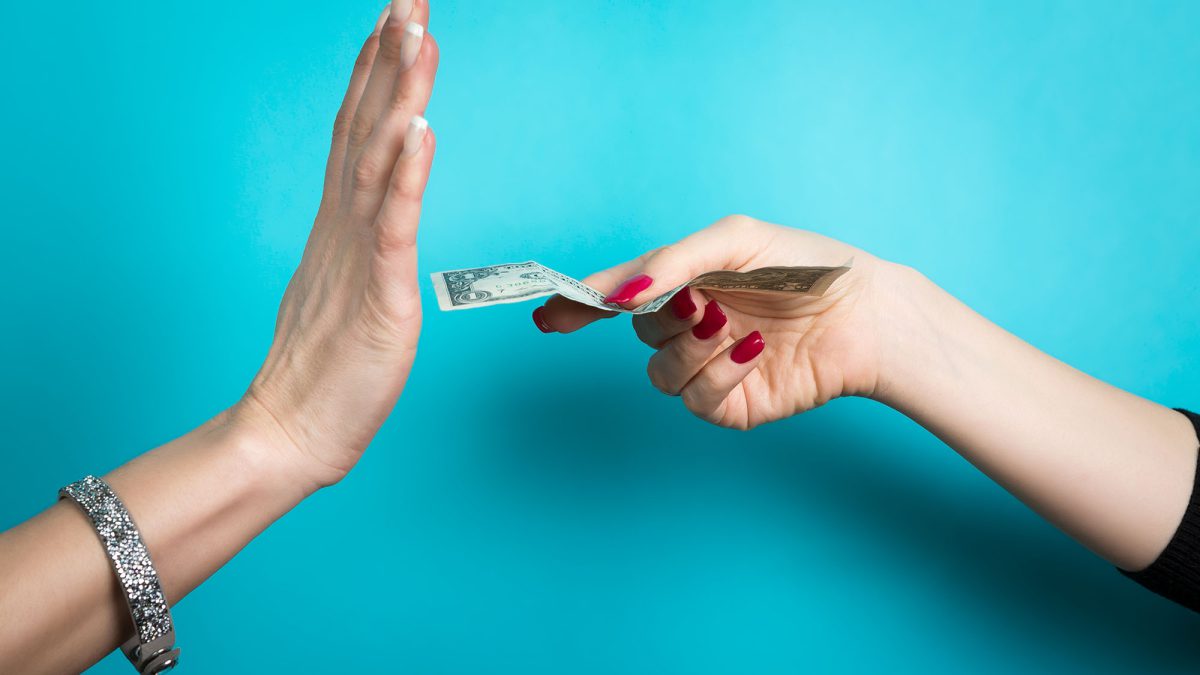What Is a Stop Payment?
Stop payment definition
A stop payment is an instruction you give to a bank or financial institution to cancel the payment of a check, electronic payment or some other type of bank draft. You must be the holder, either individually or jointly, of the account from which the item was drawn. A stop payment order is only effective if you issue it before the bank processes the item. Banks frequently charge a fee for a stop payment order.
Why Issue a Stop Payment
There are several reasons you might want to request a stop payment:
- You might issue a stop payment order if you change your mind after you’ve already started making payment.
- You could fall into a dispute with a company that sells you a product or service and want to halt payment until you resolve the matter.
- Another reason to stop payment is if you misplace your checkbook and think it might have been stolen, or if you know that an unauthorized person has forged your signature on one of your checks.
- You might stop payment if you realize after issuing a check or other form of payment that the account has insufficient funds, and you want to avoid the bounced-payment fee, which is usually larger than the stop-payment fee.
- If you accidentally mailed a check to the wrong address or put incorrect information on a check, you might want to issue a stop payment.
How a stop payment works
Many banks will honor an oral communication to stop an item if they can satisfactorily confirm your identity. In joint accounts, either co-owner can stop a payment. A stop payment order is good for six months. However, if you stopped a payment orally, you have only 14 days to confirm the stop order in writing or the stop payment will lapse and the item might be paid. You can extend the stop payment an additional six months by written request.
How to stop payment on a check
You can cancel a check by requesting a stop payment from your bank. To properly stop payment on a check or other form of payment, you’ll need to do the following:
- Take quick action. Once you realize there’s a problem, you should start the process of issuing a stop payment order immediately. If the payment is processed before you issue the stop order, it’s too late.
- Verify that the check has not been processed. If you have an easy way to find out whether the payment has been processed, do that first. If the payment has been processed, a stop payment order can’t help you. You’ll need to report the theft or check fraud through a separate process.
- Gather the check or payment information. Your bank needs to know which payment to stop. Each bank has its own specific process, but for checks, you could be asked to provide:
- Photo ID to prove your identity
- Your routing and account numbers
- The name of the person or entity you made the check out to
- The number of the check
- The date of the check
- The amount you wrote the check for
For other kinds of payments, such as ACH payments, the requests will be somewhat different. For example, you might need to provide the recipient’s account number. Gather the information you have about the payment and contact your bank as soon as possible.
- Contact your bank. The fastest way to issue a stop payment is usually to call your bank. If it’s after banking hours, see if the back of your debit card lists a 24-hour hotline. You can also check your banking app to see if it offers a way to stop payment online. As a last resort, email the bank immediately and call them as soon as the bank reopens.
Keep in mind that if you begin the stop payment process by phone, you’ll still need to follow that request up in writing within 14 days.
- Contact the payee. If, for example, you sent a check to the wrong address or wrote a check for the wrong amount, contact the person or company you intended to pay and let them know what happened so you can arrange to pay them correctly.
Stop payment order costs & fees
Issuing a stop payment order often costs the bank account holder a fee for the service. Fees can vary depending on the bank, but most are between $20 and $30 per request.
Do stop payment orders always work?
The bank will process the payment if you fail to stop it soon enough. It’s too late to stop payment once any of these events occurs:
- Your bank accepts or certifies the item.
- Your bank cashes the item.
- Your bank clears the item without the right to revoke it.
- A certain amount of time has elapsed, usually after the first banking hour of the next banking day and no later than the end of the next banking day.
If the bank honors the item despite your valid request for a stop payment, it’s up to you to establish that you made the request correctly and within the time limits. If you prove your case, the bank is responsible for any damages caused by failing to stop the payment, including any damages caused by the bank for dishonoring subsequent items.
It’s also possible that a stop payment order could be inadvertently ignored, and your bank processes the payment anyway. If that happens, the bank is responsible for paying back any service charges, including the stop payment fee.
Can you stop payment on a cashier’s check or money order?
Unfortunately, you can’t issue a stop payment order on a cashier’s check or money order. Why not? In each case, the funds for these payments are processed from your account immediately.
Rather than issue a stop order payment, you can try to cancel a cashier’s check or money order. This might sound similar, but it’s a different process since the funds were already removed from your account. Canceling a money order can take up to 60 days, and canceling a cashier’s check can take up to 90 days, so be extremely careful with these types of payments.
Wrongful dishonor
Sometimes, a bank will stop payment without receiving a stop order from the customer to do so. This might occur if the bank believes the item would cause an overdraft, for example, but mistakes can occur.
If the bank dishonors a proper payment, the bank is liable for damages caused by wrongfully dishonoring the item. The amount of the liability is limited to the cost of actual damages to the customer, including arrest, prosecution, or other consequential damages. You must prove the facts of the case to collect damages.
Quicken has made the material on this blog available for informational purposes only. Use of this website constitutes agreement to our Terms of Use and Privacy Policy. Quicken does not offer advisory or brokerage services, does not recommend the purchase or sale of any particular securities or other investments, and does not offer tax advice. For any such advice, please consult a professional.



